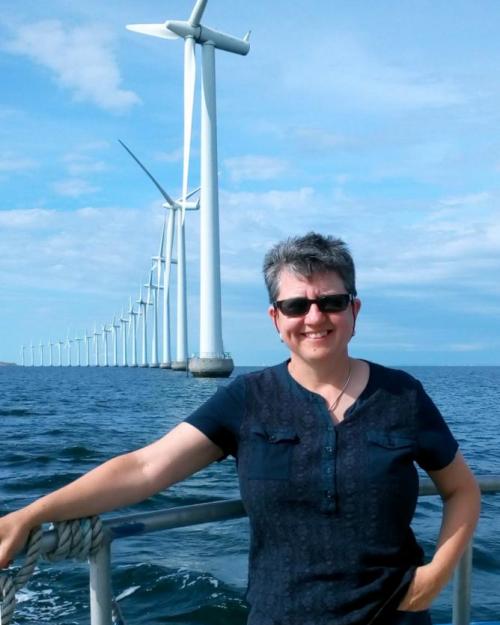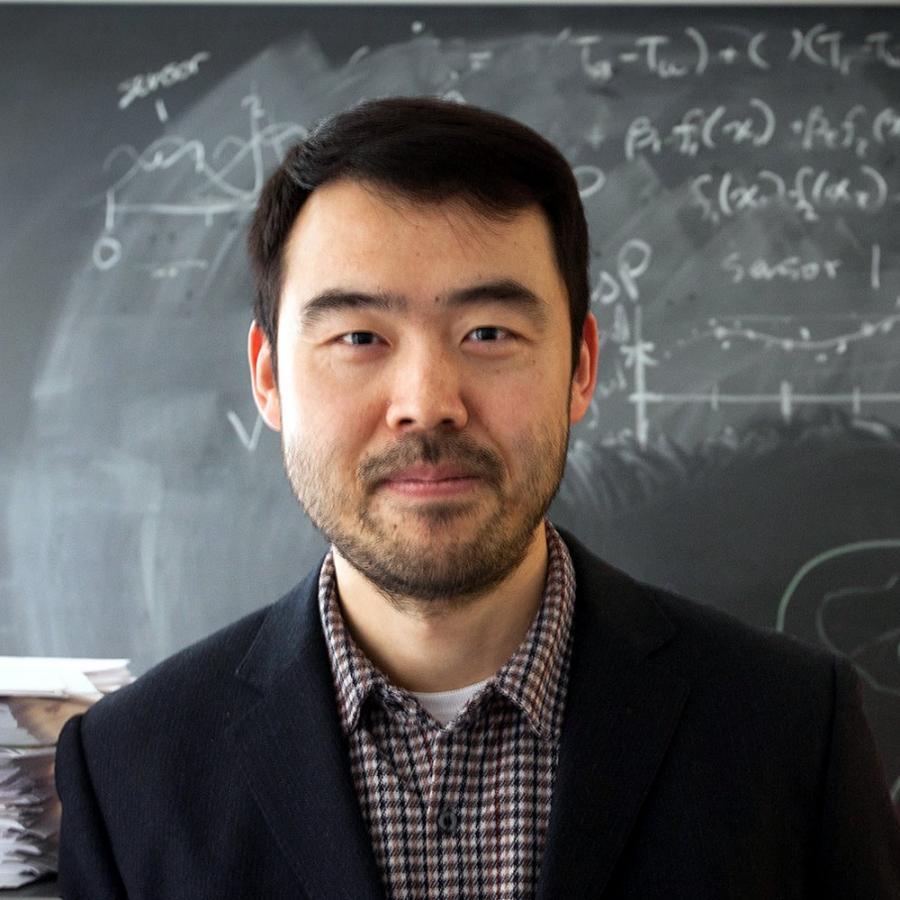Cleaning our water to protect marine life
Pollution threatens our oceans, seas and waterways, as well as the many endangered species living there. Increasingly, plastic waste from homes and businesses ends up in water, and the commercial fishing industry contributes a significant amount from polymers in fishing gear.
To address the plastic environmental crisis, Cornell chemists have developed a new polymer with ample strength in a marine setting that is poised to degrade by ultraviolet radiation. Geoff Coates, the Tisch University Professor in the Department of Chemistry and Chemical Biology, in the College of Arts and Sciences, and his research team have spent 15 years developing a plastic called isotactic polypropylene oxide (iPPO) which is stable in ordinary use, but over time breaks down when exposed to UV light.
“We have created a new plastic that has the mechanical properties required by commercial fishing gear. If it eventually gets lost in the aquatic environment, this material can degrade on a realistic time scale,” said lead researcher Bryce Lipinski, a doctoral candidate in the Coates laboratory. “This material could reduce persistent plastic accumulation in the environment.”
Removing larger debris in water is important, but it is also critical to look at pollution on a smaller scale. Microplastics, which are tiny bits of sub-millimeter-sized plastic, come from larger pieces of plastic debris or are manufactured as microbeads for products such as skin cleansers and toothpastes. Microplastics easily pass through wastewater treatment facilities and are increasingly finding their way into oceans, among other places, which can affect the feeding habits of a number of species.
Engineers from Cornell and North Carolina State University have proposed a creative solution: an army of swimming, self-propelled biomaterials called ‘microcleaners’ that scavenge and capture plastics so they can be decomposed by computationally-engineered microorganisms. Nicholas Abbott, the Tisch University Professor in the Smith School of Chemical and Biomolecular Engineering, is working with a team of experts in chemistry, biology, environmental toxicology, hydrology, artificial intelligence and computer science on the project.
Abbott said one of the many challenges underlying the collection of microplastics is that, in the world of microparticles, they are relatively large and diffuse very slowly in water.
“You can’t wait for them to come to you to be captured,” Abbott said. “They are also present in enormous volumes of water. Our plan is to create actively propelled microsystems based on biodegradable droplets that seek out and capture the microplastic particles. Because they are self-propelled, they can search a large volume of water.”
Unlocking more effective wind energy
Rebecca J. Barthelmie, professor in the Sibley School of Mechanical and Aerospace Engineering, and Sara C. Pryor, professor of earth and atmospheric sciences in the College of Agriculture and Life Sciences (CALS), are harnessing the power of wind to meet the nation’s growing electricity demand and advance sustainability goals.
The U.S. currently has only two small offshore wind farms, but planned deployment of wind turbines in new lease areas along the Eastern Seaboard could eventually provide more than two times the national electricity demand — using sustainable offshore wind energy alone. A new research project, led by Pryor and Barthelmie, aims to unlock maximum wind power production by optimizing the design of wind turbine arrays.
“Our research and other projects funded under this initiative will enable us to harness the power of the wind and propel New York and other states toward their carbon neutral energy supply goals,” Pryor said.
To further accelerate the development of sustainable energy, Pryor and Barthelmie, both faculty fellows at the Cornell Atkinson Center for Sustainability, also released a new global wind atlas — a digital compendium filled with documented extreme wind speeds for all parts of the world. The first-of-its-kind resource will help engineers select optimal turbines in any given region.
“This kind of information will ensure the correct selection of wind turbines for specific deployment,” Pryor said, “and help ensure cost-efficient and dependable electricity generation from those turbines.”
Harnessing the power of the sun
Solar power holds promise for achieving sustainability goals nationally and in New York, but larger solar projects could require large swaths of farmland to be cleared for immense, land-intensive solar projects.
Max Zhang, a professor in the Sibley School of Mechanical and Aerospace Engineering, is researching efficient solar farm array configurations to avoid land-use conflicts or spoiling precious agricultural space. Zhang’s team will monitor 10 representative solar farm sites throughout New York to examine microclimates, solar radiation, temperature and soil moisture to see whether agriculture and energy development — so-called “argrivoltaics” — can coexist.
“By looking at history, we’ve seen energy transition before,” Zhang said. “A few centuries ago, we used wood, and then coal and later we used oil. So, right now we’re moving away from carbon energy at breakneck speed into green energy. Siting utility-scale solar energy projects throughout New York will become a major challenge that inevitably policymakers must face.”
While using solar power can help meet sustainable energy goals, there could be other ways that sunlight can combat climate change. Doug MacMartin, senior research associate in the Sibley School of Mechanical and Aerospace Engineering, will model the effects of introducing reflective aerosols into the stratosphere, which could deflect enough sunbeams to reduce Earth’s temperature and limit climate change impact.
MacMartin, who is leading a team from the Cornell Climate Engineering group, will develop a broad set of climate model simulations to gauge the impact of such an approach, not only for the Earth’s temperature, but on other variables such as precipitation patterns to Arctic sea ice coverage. The experimental research is focusing on all aspects of stratospheric aerosol injection, from the environmental effects to the societal impacts.
Digging into the potential of soil
Soil holds about three times as much organic carbon as the atmosphere, so improved soil systems management could play a major role in combating climate change. While the processes that bind carbon in the soil are still not well understood, Cornell researchers are seeking to develop strategies for sequestering more carbon in soil, thereby keeping it out of the atmosphere where it combines with oxygen and acts as a greenhouse gas.
A new study by Johannes Lehmann, the Liberty Hyde Bailey Professor in the CALS School of Integrative Plant Science, showed — for the first time — that soil carbon interacts with both minerals and other forms of carbon from organic materials, such as bacterial cell walls and microbial byproducts. These newly revealed interactions could help farmers improve soil health and mitigate climate change through carbon sequestration by considering the form of nitrogen in soil amendments.
“If there is an overlooked mechanism that can help us retain more carbon in soils, then that will help our climate,” Lehmann said.
In order to further increase carbon sequestration efforts, Lehmann worked with CALS senior research associate Dominic Woolf to develop a powerful new tool, Soils Revealed, that will help researchers and policymakers map the global potential for carbon sequestration.
Soils Revealed is an open-access, interactive platform that uses cutting-edge technology to model how soil organic carbon has fluctuated over the last 11,000 years and to project soil’s future carbon-storing capacity. Funded by the Cornell Atkinson Center for Sustainability, where Lehmann and Woolf are both faculty fellows, this new tool will help policymakers and nongovernmental organizations meet their regional and national climate goals by pinpointing key areas for soil restoration and for implementing land management practices that limit greenhouse gas emissions.
“It is really exciting that we now have the digital tools to explore at high resolution — even down to the individual farm — what strategies work best and how much carbon we can store,” Woolf said. “This should provide real benefits in guiding policy and land management decisions at all levels.”








